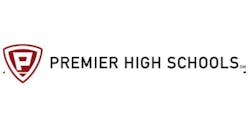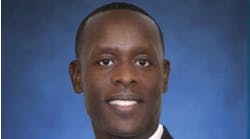Most of the millions of young people who fill classrooms throughout the United States show up with the expectation that they will learn something relevant and valuable that will help them become productive and valued members of society. And most of the adults responsible for keeping the nation’s education system functioning want the institutions they run to provide the necessary resources and a welcoming environment where that learning can take place.
But, too often reality falls short of those hopes. A school’s drive toward academic success may be derailed by misguided decisions, squandered resources, political power plays, natural catastrophes, violence, community apathy, poor communication or a host of other issues.
Many of the obstacles that confront education institutions could be overcome with more resources, but administrators soon learn that the funding and other support provided to schools regularly falls short of what is needed to fulfill the vision of most educators.
But after conceding that budgets will never be large enough to provide all the programs and resources that could benefit students, education administrators should be vigilant about using available resources wisely. Here are 10 strategies that may help schools and universities use their resources to provide the most benefits for students and the community.
1. Security
Regardless of educational and financial issues confronting administrators, a primary concern—if not the primary concern—is keeping students and staff safe.
Concerns about school and campus security, already ratcheted high because of numerous violent incidents over the years, reached unprecedented levels in the last year, as communities from coast to coast reacted to the carnage inflicted at Sandy Hook Elementary School in Newtown, Conn.
The December 2012 shootings, which left 20 young students and six adults dead, have brought intense focus on making sure that education administrators are vigilant about having systems in place to deter trouble and to react appropriately when problems do occur.
The steps school systems choose to use to provide safe learning environments will differ from community to community. Some administrators, public officials and groups have called for an armed security presence on school campuses, but others believe bringing more weapons into an educational setting would make school less safe.
Educators need to work with their communities to find the best way to balance safety and learning. Among the steps that may help bolster campus security: limiting access to school facilities through locked doors, intercoms and video cameras; conducting background checks on campus visitors; designing facilities and grounds to prevent crime; bringing in school resource officers or other safety personnel; and establishing anti-bullying and intervention programs to help identify students with problems before they escalate into violence.
2. Protection from disasters
Another key issue about which education institutions must never let down their guard is the danger and destruction that may result from natural catastrophes.
Schools and universities must make sure that their facilities are able to protect students and staff from fires, earthquakes, hurricanes and tornados—and if they are not, that plans are in place to move people to a safe location.
The destructive tornado that cut a swath through Moore, Okla., in May destroyed two elementary schools and left seven students dead. Since that tragedy, many districts in Oklahoma and elsewhere in the storm-prone area known as Tornado Alley have tried to secure funding to build safe rooms at campuses that do not have them.
A petition drive, Take Shelter Oklahoma, is seeking to gather 160,000 signatures in the state to place a $500 million statewide bond request before voters. The funding would be used to construct storm shelters in more than 1,000 Oklahoma schools without a suitable place to take shelter.
Less catastrophic but more common than tornados are fires in school facilities. The National Fire Protection Association says more than 5,600 structure fires occurred in educational properties from 2007 to 2011. The association recommends that schools conduct fire drills at least once a month when classes are in session. Staff members should inspect all exits every day to make sure that none of them are blocked.
3.Facilities utilization
Many school districts have experienced declining enrollment overall or in specific neighborhoods, and are left with facilities that are operating under capacity. Operating underutilized campuses is a budget drain that may affect the quality of education at all schools in a district, but the obvious solution—closing or consolidating schools that are significantly under capacity—can have damaging repercussions not just for those who attend such a school, but for the community.
Because of the trauma that a school closing can cause, districts are likely to take that step only as a last resort. But the severity of budget woes may persuade school boards to endure the upset and political turmoil, and close campuses to reduce operating expenses.
In the past year, Chicago, Philadelphia, and Washington, D.C., were among large urban school systems weighed down by budget deficits that decided to close multiple schools.
In some districts, most notably New York City, co-locating schools on a campus has resulted in greater utilization of classroom space.
4. Flexible spaces
School facilities have to last a long time, and over the life of a school, the way students are taught and the tools used to teach them can change many times. A school should be able to adjust its learning spaces to accommodate such changes.
The layout of a classroom where an instructor stands in front lecturing to students might not be suitable for instruction in which students work in small groups with an instructor moving throughout the room. A school may have longer class periods as part of a block schedule, and lectures and small-group work may take place in the same class session.
Having classrooms that are flexible enough to be rearranged quickly will give teachers more strategies to reach students and give students a better chance to find which learning styles work best for them.
5. Energy efficiency
Schools and universities typically have their purse strings controlled by others, and administrators are forced to educate students and operate facilities with fewer resources than desired. Because energy costs are a school system’s second-highest expenditure after personnel, education administrators constantly are looking for ways to power their facilities more efficiently.
Conserving energy in school facilities can be as simple as encouraging students and staff to turn out lights in areas not being used, or as all-encompassing as designing and building facilities with the latest sustainable systems and strategies for cutting consumption of resources.
Incorporating daylighting strategies and turning to alternative energy sources such as solar and wind power enable schools to operate facilities more efficiently. Organizations such as the U.S. Green Building Council’s Center for Green Schools and the Collaborative for High Performance Schools can provide guidance.
6. Healthy school buildings
Students spend many hours in classrooms, labs and other learning spaces, so education institutions must make sure these facilities enhance learning and not create obstacles to academic success. To provide a healthful environment for students and staff, facilities should have adequate ventilation to provide fresh air and reduce pollutants. Administrators must be vigilant about controlling moisture in buildings to prevent the growth of mold, which can create health problems for students and staff.
7. Maintenance
The people who run schools and universities have been lectured time and again about the importance of properly maintaining facilities, so it’s unlikely that there are any administrators out there who aren’t aware of the pitfalls of deferring maintenance. Yet, when resources are scarce, difficult choices have to be made, and a student’s classroom needs may take priority over a roof inspection.
Having a maintenance plan in place helps administrators make more informed decisions about how to allocate resources for monitoring and repairing facilities and equipment. Keeping track of the age of buildings and equipment and when upgrades or routine maintenance is needed enable schools to use objective criteria to determine when work should be done and make it less likely that jobs will fall through the cracks and be neglected.
Computerized maintenance management systems enable education institutions to carry out these efforts more efficiently.
8. Technology
The ever-growing prevalence of technology has transformed society, and schools and universities have embraced the changes so that students can receive an education more relevant to the world that awaits them. Computers and the online resources they bring to students may provide an opportunity for more in-depth, individualized learning, but the machines themselves won’t lead to any miracles if educators don’t have a plan for using technology wisely.
Tablet computer devices such as iPads, which didn’t exist a few years ago, are compact and portable enough that it’s feasible for every student in a classroom to have one. Many students have their own tablets, laptop machines or Internet-enabled smart phones, so more schools are establishing bring-your-own-technology policies.
The increase in computing capacity available in schools enables many more users to connect to the vast resources of the online world, and wireless computing capabilities mean that school facilities have provide Internet access without the infrastructure headaches that would have resulted from having to wire every classroom in a facility. Wireless computing also means that learning resources are available outside the classroom after hours.
9. Community connection
Public school systems depend on the support of taxpayers to operate, and schools function more effectively when they are an integral part of the community they serve. A school that doesn’t shut its doors when students are dismissed, but opens its facilities for use by others in the community is more likely to be viewed as a valuable resource instead of a faceless government bureaucracy wasting tax dollars.
A school system that communicates regularly and openly with the community it serves is more likely to find that community more receptive when the school makes a case for a construction bond issue. Web pages, social media outlets such as Facebook and Twitter, text and voicemail alerts, and e-mail newsletters are some of the ways that schools can keep in touch with constituents and let people know what is going on.
10. Funding equity
Because public schools are dependent on politicians for funding, state legislatures have been known to make budget decisions that are influenced by factors other than the education needs of students. State financing formulas may distribute funding in ways that some districts find inequitable or the money that lawmakers allocate for schools may be less than adequate in the eyes of school administrators or parents of students.
School systems and their patrons who have concluded that the funding they receive is unconstitutionally inadequate or has been allocated unfairly often have gone to court to try to obtain more money to educate students. Over the years, nearly every state has been entangled in lawsuits over how funding for public schools is doled out.
For example, last year, a judge in Texas ruled that state’s school financing system unconstitutional, but after the legislature restored some of the education funding it had cut in previous years, the judge has scheduled more hearings in January to update the court record before issuing a written opinion.
Kennedy, writer, can be reached at [email protected].


